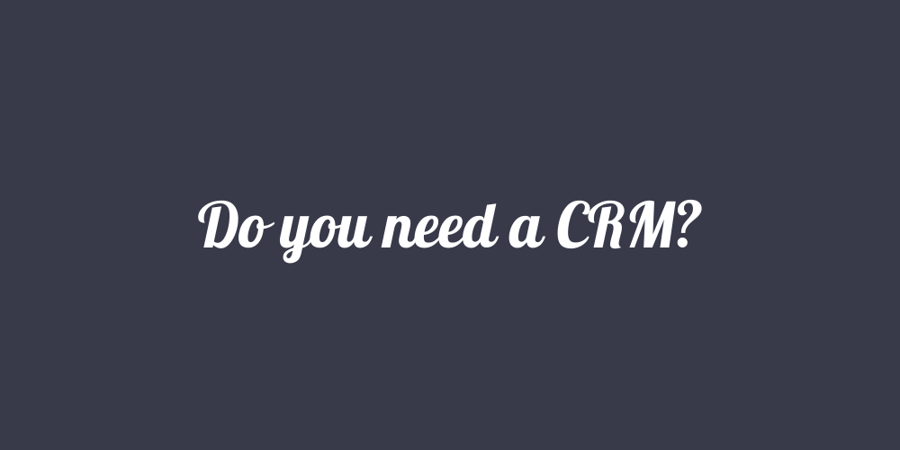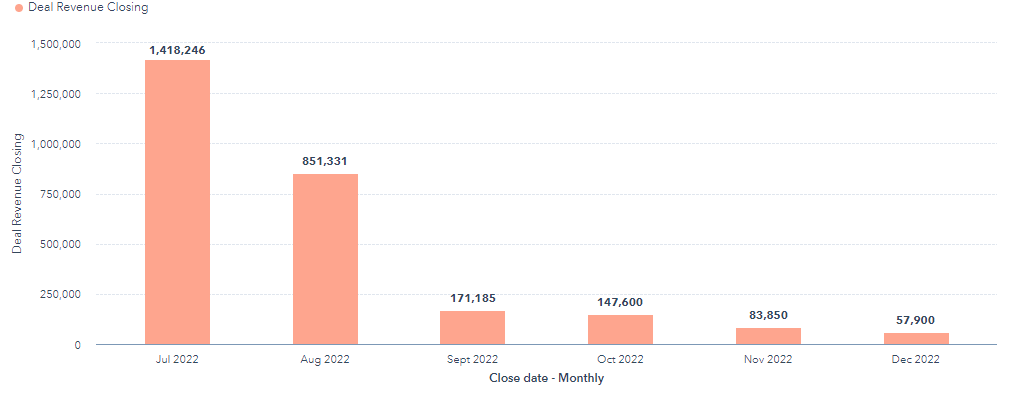Unmatched secures Highly Commended Best New Startup
Unmatched has seized the "Highly Commended" title for the Best New Start Up at the Bury Free Press...

Launched in early July, a taxpayer-funded campaign encouraged businesses around the UK to divert marketing spending to cut the prices of goods.
This is a terrible idea, but it doesn't come as a surprise given the marketing and business expertise of those who came up with that campaign! As many on LinkedIn have already suggested, cutting marketing spend right now entirely will leave you even further behind your competition.
However, reducing spend in non-essential areas can be beneficial especially in times of economic uncertainty. Reducing spend on underperforming ads or channels may be a good place to start for some, reducing the amount of content you produce may be another good option for another.
One thing that shouldn't get cut though, is your CRM. The beating heart of any successful business. Cut your CRM or your CRM budget and be prepared to see chaos seep through your business real fast.
Firstly, a CRM is the heart of your business. The data warehouse, the place where deals are closed and marketing campaigns are born. If you're yet to introduce a modern and powerful CRM into your business, you're missing out.
A CRM such as HubSpot can provide the following benefits during an economic downturn:
Let's go into some more detail on each of these 👇
Most people have heard of marketing automation, but tools such as HubSpot (and arguably Salesforce, Pipedrive, and Zoho) also allow you to automate many more processes in your business. Here's a couple of examples of business automation:
When you win/close on a new deal. You could automatically enroll the contact in an onboarding email series to make sure they know how to use your product. You also automate the invoice generation on your accounting software and save your accounts team time. And of course, you automate a Slack message to everyone at your organisation with tons of 🎉🎉🎉🎉 and 💸💸💸💸 emojis.
When a customer leaves negative feedback. You could automatically set a task for your success manager to reach out to them and address their feedback. You let the product team know the customer feedback via a Slack message in their #feedback channel. You then add the customer to a list of VIPs who will be the first to receive your next update or merch drop to bring them back on board.
For one or two customers the above to examples don't seem like much, but when you have an overstretched team and resource is tight, these automations will save hours and ensure nothing is missed.
There's nothing worse than flying blind, and that's why using deals within your CRM is so important to predicting future revenue for the business.
One of the most underated features of HubSpot is the 'inactive deals' feature. This shows you which deals need your attention as they've gone quiet for [x] days/weeks (you can choose!).
By using inactive deals, or a similar feature, you'll be able to see which deals need to be moved along in the pipeline. If you have automation capability, you could even ping a task and email when your deal reaches an inactive state!
Another key area for planning ahead is using your CRM pipeline to predict incoming revenue on any particular month. This is simply by using the close date of your deal and creating a graph in the awesome HubSpot Reporting area. An example of what this looks like is below:

If you're feeling extra clever, you could even use Products (in HubSpot) to calculate your profit margin per month per deal. Snazzy!
Everyone knows that keeping an existing customer is much easier than finding a new one, which is why your post-sale experience is so important. Tools such as HubSpot Service Hub can help you achieve an incredible customer experience at scale. Here's some stats that show just how important customer experience is:
So how can you improve your retention by using your CRM? It's quite simple really.
But what about customers who have been with us for a while? Good question, keeping 'old dogs' happy isn't always the easiest. You need to implement a Surprise and Delight element to your customer experience, which is nice and easy to implement with a CRM.
For example, make sure you log when a customer's birthday is. Setup a workflow so that 2 weeks before their birthday you get reminded to send them a small gift or a card. You can do the same for anniversaries of how long they've been working with you too!
Another example that I like to use is: 'make your contact/the boss look awesome'. A round of Krispy Kreme's delivered to their office but 'from' your contact, winner! Or organising a team event that your company sponsors and puts your contact at the forefront is another sure way to win favour.
> 1 min read
Unmatched has seized the "Highly Commended" title for the Best New Start Up at the Bury Free Press...
8 min read
Marketing Hub Starter is under £50 a month and Marketing Hub Professional is around £850 per month....
4 min read
In the world of marketing, there are countless tools promising to enhance your daily processes....
3 min read
Your CRM should be the beating heart of your business. A happy place where data is up to date and...
2 min read
HubSpot has just announced they will be acquiring Clearbit in a landmark move for the new age of...
4 min read
Automation is a marketing and sales life-saver. It saves you time, money, and it also improves the...